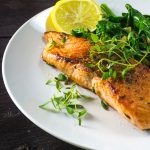Are You Still Eating Bars?
If so, you’re not alone. US bar sales are expected to increase from where they were just three years ago, $5.5 billion to $6.2 billion by 2018(1). Clearly, we’re eating bars every day. Convenient, not too messy and not typically perishable, it makes sense why a nation on the go relies heavily upon this option as an all too common meal replacement option or snack. But what those bars may actually consist of can vary widely from those with ingredients we can actually identify as food to those with a list so long with so many chemicals we’re not really sure what we’re eating… if we even look! Notice how much the image above, of energy or protein bars, resembles the candy bar stand at the typical grocery store? Let that be the first indication of how natural or healthy these choices are. And to add another element of confusion to the mix, most are too high in sugar and even natural sugar from honey, dates and agave is still sugar. “The liver doesn’t know whether sugar came from fruit or not,” said Kimber Stanhope, a researcher at the University of California, Davis, who studies the effects of sugar on health, in a recent blog post in the New York Times(2). They also tend to be too low in fiber and too low in real protein (soy protein isolate, rice and pea proteins don’t hold a candle to what you’d get from a piece of fresh, wild salmon!) to really take the place of a meal. What’s worse, because most tend to be high in sugar, relying on them for a snack to tide you over from one meal to the next can actually come back to bite you; a sugar spike in the afternoon after eating a bar made of dates, honey and an array of what the package lists as superfood is going to leave you low on energy shortly after you eat it, only wanting more of the same. And if you’re an athlete using bars during your training, this needs reconsidering, too. When we’re moving our bodies, it’s as though we’re in fight or flight. Blood is being diverted to the skeletal muscles to allow us to fire them and go, go, go… not leaving much available for extraneous tasks like going to the gut to digest what is in effect a solid lump of matter. But what about those times when you really don’t have the option of eating a fresh meal and you can’t carry your thermal lunch tote and ice pack with a nicely home-made packed lunch? Surely there must be some viable options, right? Yes, but here’s the caveat: all bars are not meant to be eaten day in and day out. Think of them as what I call an ‘in a pinch’ or ‘grey area’ food! Below are a couple of viable options: EPIC BAR, SALMON No added sugar, wild caught fish and no funny business on the ingredient panel EPIC BAR, VENISON For athletes looking for a bit of carbohydrate during a long, off-season aero session, for example, when a little bit of sugar can help fuel the fat burning fire, below are a couple more choices. (Just don’t make the mistake of trying to down a bar during an intense training session or race when the majority of the blood is heading to fire the working skeletal muscles… not the gut to digest a solid block of food!) THE PALEO DIET BAR Endorsed by Dr. Cordain himself, they’re one of the few bars on the market claiming to be sourced from Paleo ingredients that actually are. (Others may contain pea, rice and soy protein, for example) EXO Yes, the original cricket bar! Don’t get too hung up on bars, though; after all once you become fat adapted you can easily rely on some good quality fat to tide you from one meal to the next without skewing your shift to keto. It doesn’t get much easier than carrying a packet of fat with you which you can easily mix into a hot tea or coffee, bullet proof style (you can do it dairy free with coconut!!) COCONUT BUTTER PACKET COCONUT OIL PACKET MCT Oil (I carry mine when I fly; talk about a perfect solution to not need to rely on airport or airplane food!) Bottom line: you can assume most bars are too high in sugar, too highly processed and don’t contain adequate nutrient density to grant them passage into a normal part of your daily regime. Read labels, look out for anything you cannot identify as food and beware of nutrition panels showing high amounts of sugar and low fat and protein. As always if you apply these same old principles to what you eat as often as you can, you’re far less likely to end up being “glutened”, “soyed” or with an awful stomachache, headache and on overall feeling of malaise. It’s worth taking a few minutes to review what you’re about to put in your body and giving yourself a chance to continue on the path of feeling great, rather than throwing caution to the wind and risking a bout of illness. 1 ”Fit Club: Tracking Nutrition Bar Trends.” Fit Club Tracking Nutrition Bar Trends. Food Business News, n.d. Web. 09 June 2016 2 “Is Sugar Really Bad for You? It Depends.” Well Is Sugar Really Bad for You It Depends Comments. New York Times, n.d. Web. 09 June 2016.





